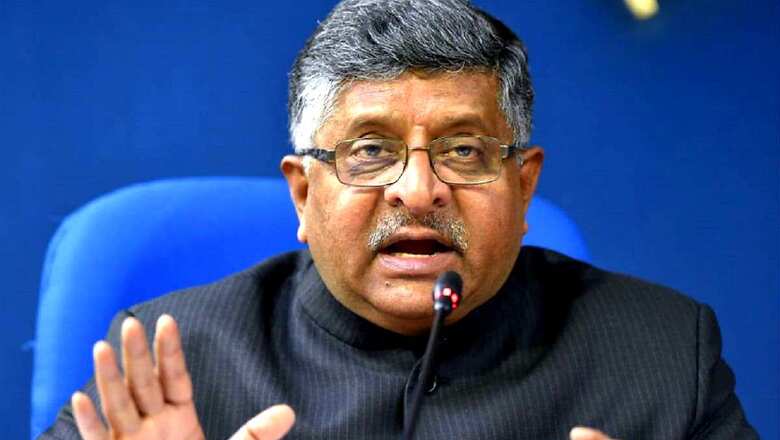
views
As many as 35 judges were appointed to the Supreme Court while 557 new judges were appointed and 483 additional judges made permanent in various High Courts in the country between 2014 to 2020, the government informed the Rajya Sabha. In a written reply to a question, Minister for Law and Justice Ravi Shankar Prasad said the number of computerized District and Subordinate courts has increased from 13,672 in 2014 to 16,845 as on September 14, 2020, registering an increase of 3,173. He said a new and user-friendly version of Case Information Software has been developed and deployed at all the computerized District and Subordinate Courts. All stakeholders including Judicial Officers can access information relating to judicial proceedings/decisions of computerized District & Subordinate Courts and High Courts on the National Judicial Data Grid (NJDG) as on September 14, 2020.
The minister informed that eCourt services such as details of case registration, cause lists, case status, daily orders and final judgments are available to litigants and advocates through the eCourts web portal, Judicial Service Centres (JSC) in all computerized courts, eCourts Mobile App, email service, SMS push and pull services. "Video conferencing facility has been enabled between 3,240 court complexes and1,272 corresponding jails," he said. "From May 1, 2014 to September 14, 2020, 35 Judges were appointed in Supreme Court. 557 new Judges were appointed and 483 Additional Judges were made permanent in the High Courts. Sanctioned strength of Judges of High Courts has been increased from 906 in May, 2014 to 1079 currently," he said.
The sanctioned and working strength of Judicial Officers in District and Subordinate Courts has increased from 19,518 and 15,115 respectively as on December 31, 2013, while the sanctioned strength of judges on September 15, 2020 is 24,203 and the working strength is 19,171. He, however, said filling up of vacancies in the subordinate judiciary falls within the domain of the state governments and the High Courts concerned.
Prasad said the National Mission for Justice Delivery and Legal Reforms was set up in August, 2011 with the twin objectives of increasing access by reducing delays andarrears in the system and enhancing accountability through structural changes and by setting performance standards and capacities. The Mission has been pursuing a co-ordinated approach for phased liquidation of arrears and pendency in judicial administration, which, inter-alia, involves better infrastructure for courts including computerization, increase in strength of subordinate judiciary, policy and legislative measures in the areas prone to excessive litigation, re-engineering of court procedure for quick disposal of cases and emphasis on human resource development, he said.
The minister also said Rs 7,929.99 crore have been released since the inception of the Centrally Sponsored Scheme (CSS) for Development of Infrastructure Facilities for Judiciary in 1993-94. Out of this, Rs 4,485.68 crores, which is 56.56 percent of the total amount released till date, have been released to the States and UTs since April, 2014. The number of court halls has increased from 15,818 as on June 30, 2014 to 19,830 as on September 14, 2020 and the number of residential units has increased from 10,211 as on June 30, 2014 to 17,613 as on September 14, 2020. In addition, 2,778 court halls and 1,885 residential units are under construction, he said.
.




















Comments
0 comment